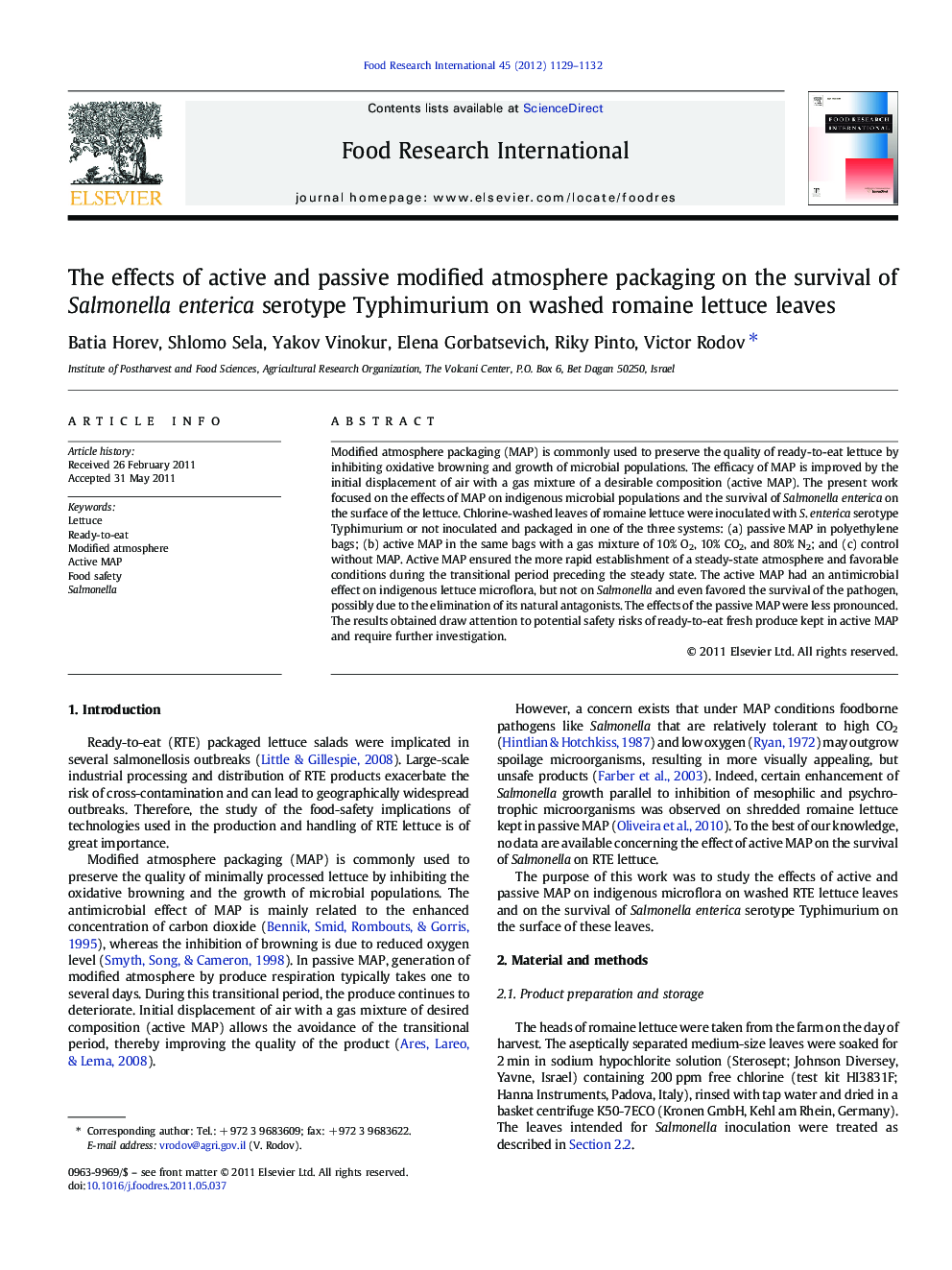| Article ID | Journal | Published Year | Pages | File Type |
|---|---|---|---|---|
| 4561780 | Food Research International | 2012 | 4 Pages |
Modified atmosphere packaging (MAP) is commonly used to preserve the quality of ready-to-eat lettuce by inhibiting oxidative browning and growth of microbial populations. The efficacy of MAP is improved by the initial displacement of air with a gas mixture of a desirable composition (active MAP). The present work focused on the effects of MAP on indigenous microbial populations and the survival of Salmonella enterica on the surface of the lettuce. Chlorine-washed leaves of romaine lettuce were inoculated with S. enterica serotype Typhimurium or not inoculated and packaged in one of the three systems: (a) passive MAP in polyethylene bags; (b) active MAP in the same bags with a gas mixture of 10% O2, 10% CO2, and 80% N2; and (c) control without MAP. Active MAP ensured the more rapid establishment of a steady-state atmosphere and favorable conditions during the transitional period preceding the steady state. The active MAP had an antimicrobial effect on indigenous lettuce microflora, but not on Salmonella and even favored the survival of the pathogen, possibly due to the elimination of its natural antagonists. The effects of the passive MAP were less pronounced. The results obtained draw attention to potential safety risks of ready-to-eat fresh produce kept in active MAP and require further investigation.
Research highlights► Bacterial growth on washed lettuce kept in air, passive and active MAP was compared. ► Active MAP was formed by package flushing with a mix of 10% O2 and 10% CO2. ► Active MAP maintained a CO2-enriched atmosphere throughout the storage period. ► Active MAP inhibited the native microflora growth but favored Salmonella survival. ► The effects of the passive MAP were less pronounced than those of the active MAP.
